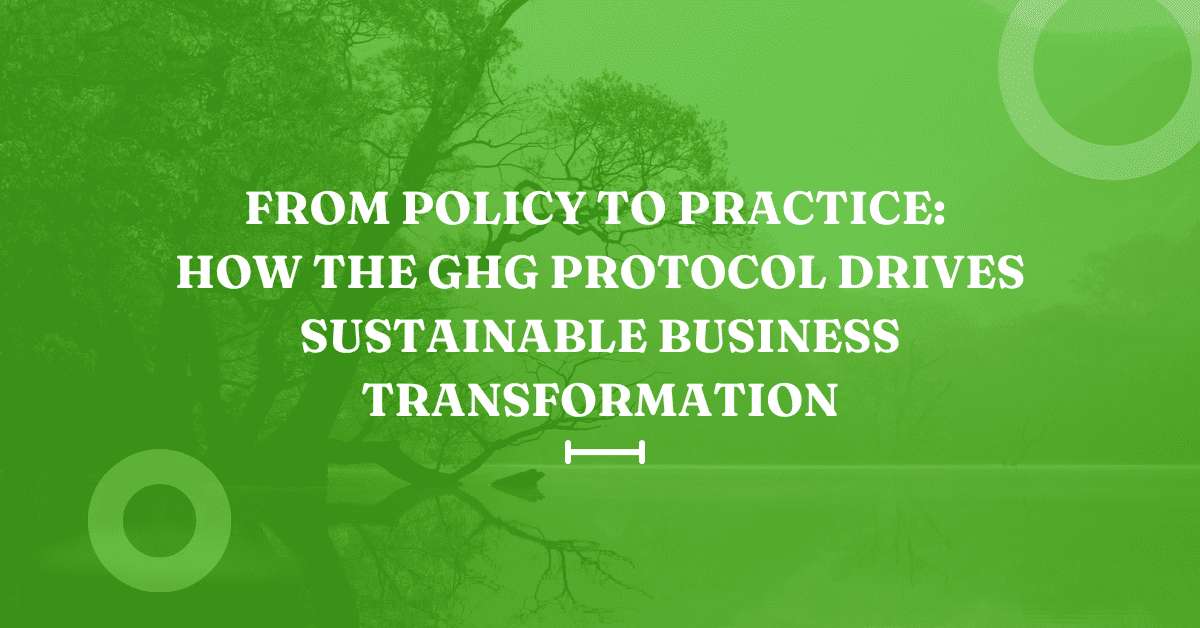The journey from sustainability pledges to concrete environmental impact requires more than good intentions. It requires a structured framework for measuring, managing, and reducing greenhouse gas emissions. The Greenhouse Gas (GHG) Protocol, a globally recognized standard, plays a critical role in guiding businesses through this transition. By providing detailed methodologies for accounting and reporting greenhouse gases, the GHG Protocol empowers companies to turn sustainability goals into actionable strategies.
What is the GHG Protocol?
Developed by the World Resources Institute (WRI) and the World Business Council for Sustainable Development (WBCSD), the GHG Protocol is the world’s most widely used standard for greenhouse gas accounting. It offers comprehensive guidance on measuring emissions across entire value chains, helping businesses understand their direct and indirect contributions to climate change.
The protocol categorizes emissions into three key scopes:
- Scope 1: Direct emissions from owned or controlled sources, such as company-owned vehicles and facilities.
- Scope 2: Indirect emissions from the generation of purchased electricity, steam, heating, and cooling.
- Scope 3: Other indirect emissions that occur in a company’s value chain, including emissions from suppliers, distribution networks, and product use by consumers.
This holistic approach allows businesses to track their full carbon footprint and identify the areas where the most significant emissions reductions can be made.
Turning Sustainability Goals into Actionable Strategies
The GHG Protocol is essential in translating high-level sustainability commitments into concrete actions. By using this framework, businesses can establish clear and measurable emissions reduction targets. These targets can then be embedded into the company’s operational strategies, helping prioritise investments in energy efficiency, cleaner technologies, and sustainable supply chain practices.
For instance, a company might discover through Scope 2 reporting that its electricity usage accounts for a large portion of its carbon footprint. This insight could lead the company to invest in renewable energy sources, such as solar or wind power, thereby reducing its Scope 2 emissions over time.
Furthermore, Scope 3 emissions often represent the majority of a company’s carbon footprint. By identifying and managing these emissions, businesses can not only reduce their environmental impact but also strengthen their relationships with suppliers, customers, and other stakeholders across the value chain.
GHG Protocol and Carbon Credit Markets
One of the key advantages of adopting the GHG Protocol is its ability to integrate with carbon credit markets. Businesses that accurately measure their emissions using the protocol can more effectively determine how much carbon needs to be offset through the purchase of carbon credits. This ensures that the credits are used strategically, complementing the company’s broader emissions reduction efforts.
By aligning carbon credit purchases with the GHG Protocol’s standardised reporting, businesses can demonstrate transparency and accountability to investors, regulators, and customers. This level of trust is critical as the demand for corporate sustainability continues to grow.
The Path to Sustainable Business Transformation
As businesses move from policy to practice, the GHG Protocol serves as a vital tool for managing and reducing emissions in a structured, transparent, and accountable way. Companies that leverage this framework can turn sustainability into a strategic advantage, positioning themselves for success in a carbon-conscious marketplace.
However, to drive long-term transformation, companies must combine the power of the GHG Protocol with other sustainability solutions, such as carbon credits, energy efficiency initiatives, and supply chain optimization. Together, these elements form the foundation of a sustainable business model that is both profitable and planet-friendly.





